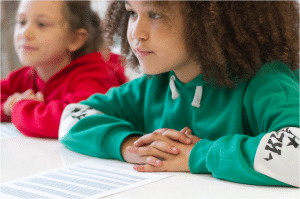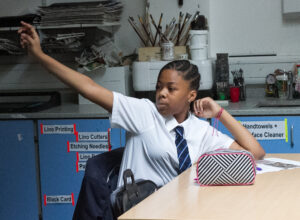What next for children’s reading?
by Will Millard
11th February 2022
There has been some alarming coverage recently about children’s reading. The Sunday Times reported that “some 11-year-olds [are] only able to understand books suitable for six-year-olds”.[1] This and other coverage indicates we are in the midst of a ‘reading crisis’.[2]
I broadly agree that we face a reading crisis. While it is politically expedient to blame the pandemic, this reading ‘crisis’ is not in any way a new phenomenon. The National Literacy Trust estimates that 7.1 million adults in England have ‘very poor literacy skills’.[3] The pandemic has made a bad situation worse.
Are some children falling behind in reading?
Yes. Let’s start with Key Stage 2 SATs results, one of the blunter (but nevertheless illustrative) measurements of children’s reading ability. In 2019 (the last year for which we have ‘normal’ data), 73% of children achieved the expected standard in reading.[4] What isn’t stated explicitly in the results is that – by extension – over a quarter (27%) of children taking KS2 tests were not reaching the expected level in reading at the end of primary school.
According to the government’s own measures, over a quarter of pupils completing primary school were not reaching the expected standard in reading, and this was before the pandemic. The proportion of pupils from poor backgrounds and those with forms of special educational needs and disabilities achieving the expected standard is lower still.
At KS1, 2019 KS1 data shows a broadly similar trend: a quarter of pupils did not meet the expected standard in reading, and 4 in 10 pupils from disadvantaged backgrounds were not meeting the expected standard.[5]
How has the pandemic affected children’s reading?
Oxford University Press conducts a survey of teachers every second Autumn, which has historically found that teachers feel that 1 child in 5 (on average) is behind in reading across primary school. In November 2021, teachers said this had increased to 1 in 4 children.[6] A research partnership involving CfEY and Sheffield Hallam University, led by Ipsos MORI, is finding that one of schools’ main areas of focus in terms of learning recovery is reading.[7]
Some studies suggest the pandemic has made this worse. DfE-commissioned analysis conducted by EPI and Renaissance Learning,[8] and separate research conducted by NfER and EEF,[9] shows that pupils’ reading has suffered during the pandemic. By the summer term 2021, at primary and secondary school, pupils were about one month behind where they would normally be in reading. However, among pupils eligible for free school meals, the learning loss is greater and they are recovering at a slower pace.[10]
A caveat: the problems with how we measure reading ability
But hold your horses. The studies mentioned, above, show that – at a primary and secondary cohort level – reading ability (broadly conceived) has been slightly dampened by the pandemic. Like me, though, you might have read these results and thought: ‘One or two months’ loss? That’s not that bad’. Indeed, GL Assessment has published research indicating the pandemic has made the situation only slightly worse:
“[C]hildren’s reading ability does not appear to have been significantly affected by the disruption caused by the pandemic, regardless of type of school.”[11]
However, there’s a more fundamental point, which is that capturing and describing reading ability is fiendishly difficult. This is an issue explored in depth in an excellent TES article by Jessica Powell[12], in which Dr Jessie Ricketts, Director of the Language and Reading Acquisition (LARA) research laboratory at Royal Holloway University of London describes the challenges associated with measuring reading ability. In the article, Dr Ricketts says:
“Using reading ages (or other age equivalents) is highly problematic because it rests on the idea that there’s a clear expectation for how well a child should be reading at any given age. While this is broadly true, it doesn’t boil down to one level of reading but rather to an expected range.
“Imagine the same reading test was administered to five-year-olds in Year 1. For this age group, most children can read at least one word, some can read as many as 25. The average is eight and most read between three and 13. Because word reading abilities are changing so rapidly at this age, there tends to be a particularly wide variation, so a child who is ‘six months behind’ will look very different at 5 compared with 9.”
In direct correspondence with me, Dr Ricketts added:
“Months of progress is similarly problematic because saying that a child has ‘fallen behind by 3 months’ could still place them firmly in the average range for their age, or be within the expected limits of how reading might change over time and their abilities may still have improved.”
Sharing reading ages can lead to pupils and parents feeling stigmatised, pupils losing confidence (which is completely counterproductive), and teachers forming false impressions about pupils’ reading abilities. Companies who produce reading tests tend to dissuade schools from using reading ages on their own (if at all). Reading ages are simplistic and – at the surface – easy to understand, but other measures including scaled scores and percentiles arguably hold greater utility. That said, interpreting scaled scores can be tricky and, as a contributor to Powell’s article asks: “What does [a scaled score of] 672 mean? It’s better than 653, but what does 653 mean?”.
While agreeing on the best way to measure reading is complex and subject to extensive debate, a general rule of thumb among experts is that combining multiple assessments helps build a fuller picture of reading ability and avoids the pitfalls inherent with standalone reading ages.
Those who fall behind in reading tend not to catch up
In February 2020, GL Assessment published some illuminating research – ‘Read All About It’ – looking into children and young people’s reading which is worth exploring in depth.[13]
This large study involved analysis of the reading abilities and GCSE results of more than 370,000 secondary school students during 2018/19, and contains a hugely important finding: “Children who are weak readers will struggle as much in maths and science at GCSE as they do in English and in arts subjects.” In other words, being able to read holds the keys to success across the curriculum, not ‘just’ in English. Here I pick out several quotations from the report to illustrate reading’s importance:
- “Our study showed that there is a significant correlation between reading ability … and GCSE results across all subjects”
- “[T]he correlations in maths and the sciences also underscore just how ‘text heavy’ most academic subjects are and why literacy is so crucial. Even the more expressive subjects – art, drama, music – have strong correlations to reading ability. Creativity, in effect, will be enhanced by reading.”
In terms of reading age distribution, the study finds that, nationally:
- A quarter of 15-year-olds have a reading age of 12 or below
- One in five pupils aged 15 have a reading age of 11 or below, and 1 in 10 pupils have a reading age of 9 and below
- 20% of 11-year-olds have a reading age of 15 or above
While these proportions vary by school, they tend to be significantly worse in the most challenging settings.
How do we learn to read?
This is not an easy question to answer. Much research has discussed the Matthew Effect in reading, the idea that children who read sooner and more confidently read more and become better readers faster, while children who struggle fall further and further behind.[14]
I had a very helpful conversation with Dr Jessie Ricketts during which she explained how the ‘Simple View of Reading’ roughly divides into ‘things to do with reading words’, and ‘things to do with reading for comprehension’. While word reading is the initial barrier it develops quickly following the onset of formal literacy instruction (at age 4 in the UK). Once word reading skills are more secure, children can begin reading for comprehension. After initial bursts, both children’s development in word reading and reading comprehension slow down (but don’t stop changing and, hopefully, improving). (Two articles give a helpful overview of how we learn to read: one is by Castles, Rastle and Nation;[15] the other is by Ricketts et al.[16]).
What next for reading?
A key challenge facing teachers is that the variation in children’s reading abilities is – to quote Dr Ricketts – “enormous. Huge.” Ricketts’ view is that “we might be able to narrow gaps (closing is not a realistic goal) but another important target is to move all up.”
In conversations with several different people who know a lot more about reading development than me (and who have generously humoured me while I learn more), several things have struck me.
Once you’ve fallen behind in reading, it’s pretty difficult to catch up. However, it is possible to make up lost ground and there’s some promising work underway to improve reading outcomes (for example, we’ve worked with Right to Succeed, which is targeting KS3 reading in schools in Blackpool).[17]
Constructive responses to reading have a habit of getting sidetracked by arguments about phonics, or by the uptake of trendy, standalone strategies. (Think guided reading, free reading, or reading for pleasure: arguments can be made for all these approaches, but no single approach should represent the totality of a school’s response). The proportion of pupils entering secondary school still struggling to read well shows that what we are currently doing is not enough.
How can the pupils whose reading is already falling behind at the end of KS1 be supported throughout KS2 and into KS3 so that they can access the full curriculum on offer to them? How can we support teachers to assess children’s reading and interpret the results in a way that is productive, accurate and useful, rather than well-intentioned but counterproductive? And how can we help teachers support pupils so that worrying gaps in reading ability don’t emerge to begin with?
There’s more thinking and discussion needed here, and more action to be taken. If you’d be interested in talking to me more about what should be happening next to support children’s reading, please get in touch.
[1] https://www.thetimes.co.uk/article/pupils-starting-secondary-school-reading-age-covid-g58gvf0xb
[2] https://www.dailymail.co.uk/news/article-10432223/Children-starting-secondary-school-reading-age-SIX-education-experts-warn-crisis.html
[3] https://literacytrust.org.uk/parents-and-families/adult-literacy/
[4] https://assets.publishing.service.gov.uk/government/uploads/system/uploads/attachment_data/file/851798/KS2_Revised_publication_text_2019_v3.pdf
[5] https://assets.publishing.service.gov.uk/government/uploads/system/uploads/attachment_data/file/851296/Phonics_screening_check_and_key_stage_1_assessments_in_England_2019.pdf
[6] Research conducted by Green Shoots Market Intelligence Ltd, on behalf of OUP; for internal purposes only but kindly shared with CfEY.
[7] https://assets.publishing.service.gov.uk/government/uploads/system/uploads/attachment_data/file/1045471/School_Recovery_Strategies_year_1_findings.pdf
[8] https://assets.publishing.service.gov.uk/government/uploads/system/uploads/attachment_data/file/1029841/Understanding_progress_in_the_2020-21_academic_year_Report_4_October2021.pdf#page=12
[9] https://educationendowmentfoundation.org.uk/projects-and-evaluation/projects/nfer-impact-of-school-closures-and-subsequent-support-strategies-on-attainment-and-socioemotional-wellbeing-in-key-stage-1?utm_source=/projects-and-evaluation/projects/nfer-impact-of-school-closures-and-subsequent-support-strategies-on-attainment-and-socioemotional-wellbeing-in-key-stage-1&utm_medium=search&utm_campaign=site_search&search_term=impact%20of
[10] https://assets.publishing.service.gov.uk/government/uploads/system/uploads/attachment_data/file/1029841/Understanding_progress_in_the_2020-21_academic_year_Report_4_October2021.pdf#page=12
[11] https://righttosucceed.org.uk/wp-content/uploads/2021/05/GL-Assessment-report-Words-of-Encouragement-April-2021-1.pdf
[12] https://www.tes.com/magazine/teaching-learning/general/teachers-should-be-wary-taking-reading-age-read
[13] https://www.gl-assessment.co.uk/press-office/press-releases/new-study-highlights-the-importance-of-reading-to-the-whole-school-curriculum/
[14] https://www.psychologytoday.com/files/u81/Stanovich__1986_.pdf
[15] https://journals.sagepub.com/doi/full/10.1177/1529100618772271
[16] https://www.tandfonline.com/doi/full/10.1080/10888438.2019.1689244
[17] https://righttosucceed.org.uk/get-inspired/blog/secretary-of-state-education-blackpool/


The DfE could stop insisting that constrained skills be teacher-led and let children get on with learning phonics and high-frequency words at their pace! This is working for our Aussie teachers!
https://www.speechsoundpics.com/phonics-with-technology
I am now back in the UK, please do connect as Id love to support your work.